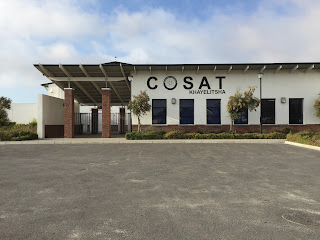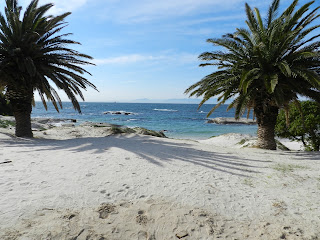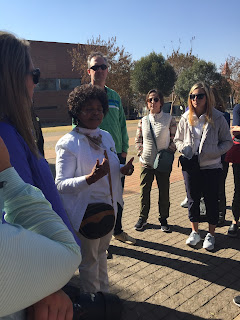Drive from Johannesburg to Kruger
Travel from Johannesburg to
Kruger
We had a plenty of time for
Pieter to give us interesting information, as we made our 6 hours journey by
bus from Johannesburg to Kruger National Park.
He began by telling us about
the Rhino poaching problem in South Africa.
A Rhino horn can be sold for up to $140,000, and because of this people
become poachers to earn a good living. The horn is so valuable because it is
believed in some countries that it has medicinal benefits. When a Rhino is
poached it happens at night, typically under a full moon so the poachers can
see, and the Rhino is left to die after their horns are cut off due to blood
loss. To be proactive about this problem, Kruger has started to cut of the
Rhinos horns in a controlled medical setting so they will not be killed for
their horn. The good news is that the Rhino horns actually grow back at a rate
of ½ inch every year.
The Rhino population has
grown in the last 15 years or so. Currently there are 18,000 in South Africa.
As we drove through the
countryside Pieter also addressed some issues with education that have not been
resolved since the Apartheid government ended throughout the country. Schools are unevenly funded and some parent
groups will hire teachers in order to make sure there are enough teachers for
the amount of students. There are
national exams that students need to pass to move onto higher education and it
is increasingly difficult for students in rural areas to pass these because of
lack of resources in their schools. However, the government gives scholarships
to exceptional students so that they can continue their studies in college.
There are laws that require students to go to school until grade 10 in South
Africa, and about 50% of the population goes all the way through to 12th
grade.
As we continued our drive he
also addressed some of the health concerns in the countryside, and spoke about
the malaria problem. He said that every three minutes a person dies from
malaria, and that children under 5 are affected the most. One of the towns we visited was called
Lydenburg, which in Dutch means “the town of suffering”. It is called this
because during The Great Trek when the Dutch moved inland to avoid the British rule
many died of Malaria. They originally blamed a tree called the Fever Tree
because it looked so different from any other trees around as it has a green
trunk, and they believed that was the cause of their illness, later it was
found to be Malaria.
We made multiple stops along
the way to enjoy the natural beauty of the Drakensburg Mountain range we were
driving through.
The first stop was called
God’s Window and was a view of Blyde River Canyon.
Our second stop was Bourke’s
Luck and Potholes.
The last stop before we reached
Kruger was a different view of the Blyde River Canyon called the Three
Rondovals.
After all these beautiful views we arrived at
the Timbavati Safari Lodge where we would stay for 3 nights while we were on
safari!












Comments
Post a Comment